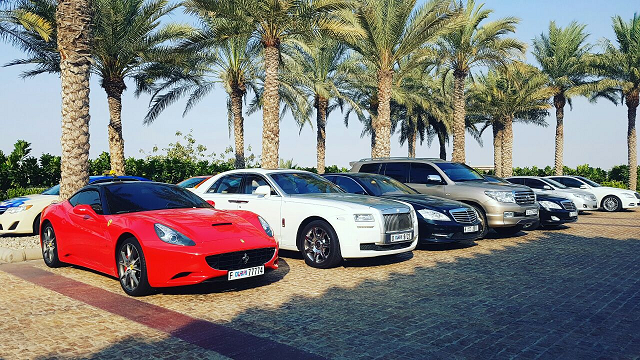Knowing Your Wheels: Differentiating SUV, AUV, and MPV
By Andrea Nicole
Posted on Dec 09, 2020

Source: Wikimedia Commons
For many of us who might be on the lookout for a car, the choices can be overwhelming. There are several car companies in the country and each of them sells a wide variety of vehicle models. With this many options, it is certainly difficult for us to choose a car that will work best for us. And so, it would be helpful to consider what type of car most Filipinos purchase.
There are three common car models that are widely available in the country: the SUV, the AUV, and the MPU. These wheels are well-liked by Filipinos that you surely have friends or family members who drive these. But, how are these three car types different? The next few paragraphs will give you an idea of their similarities and differences.
Standard Utility Vehicles

Source: Pixabay
This is a very broad category, referring to vehicles that integrate the features of a normal passenger car and an off-road car. Standard utility vehicles, also known as SUVs, are usually constructed with ladder chassis to ensure that they would have unparalleled structural integrity for rough terrains. They are also patterned after a two-box design with the engine in front and the passenger or cargo area at the back.
There are several subtypes of SUVs, mainly according to their size or capacity. Included in this list are the mini, compact, mid-size, full-size, and extended-length SUVs. Crossovers are another subtype, although it is classified not because of its size but due to its frame. Unlike most SUVs, crossovers have a unibody chassis.
Most Filipino families prefer mid-size SUVs because these cars are perfect for casual family use. Popular brands include Isuzu MU-X, Chevrolet Trailblazer, and Toyota Fortuner. On the other hand, if you are into off-road adventure, then full-size SUVs like the Ford Expedition is your best choice.
Asian Utility Vehicles

Source: Wikimedia Commons
Looking at a normal highway in the Philippines, you will always spot a Pinoy Jeepney. What people never realize is that our jeeps, which have been ingrained in our culture, are actually the ancestors of the modern AUVs that we have.
Asian Utility Vehicles are cars manufactured by companies while eyeing developing countries - like ours - as their target market. In the Philippines, some of the earliest AUVs are the Toyota Tamaraw, the Ford Tiera series, and the GM Harabas. These vehicles are primarily used for carrying the maximum number of passengers.
Then, the AUV industry in the country took a sharp turn when Toyota released its Tamaraw FX - a fresher design that looks less like a jeep and more like a car. Since then, most AUV manufacturers have followed that route, as evidenced by the most common Asian Utility Vehicles on our roads such as Innova and Crosswind.
Multi-Purpose Vehicles

Source: Wikimedia Commons
True to their name, multi-purpose vehicles or MPVs are very versatile. Their main purpose is to carry a set number of passengers, but their interior has been designed to be adjustable should the need arise for additional cargo space. Because of the way they look, MPVs are also called “minivans” in some areas of the world.
In the country, the distinction between MPVs and AUVs has been becoming more blurred. For instance, the Innova by Toyota is considered by some as an AUV, though there are also people who consider it as an MPV. Nonetheless, if you are looking for an MPV, the best options out there are manufactured by companies like Toyota, Suzuki, and Mitsubishi.
Comparing SUV, AUV, and MPV
In terms of road functionality, sports utility vehicles are superior compared to the other two since SUVs are tailored to run on rough roads. AUVs and MPVs are simply passenger vehicles - they are not designed for off-road routes. In line with this, their frames also vary. AUVs and MPVs usually have a unibody frame, while most SUVs are made with a body-on-frame design similar to trucks.
However, upon visual inspection, these three types of cars look very similar to each other. They have a two-box body design, with the front box for the engine and the second box for the cabin and cargo space. The “minivan” nickname given to MPVs are also not obvious anymore, as modern MPVs evolved to have a different design already.
Your Wheels, Your Choice
Purchasing a car in the Philippines is not hard at all especially if you are well-informed about the different options at your disposal. Just make sure that you also know your intended purpose. Will you use it for a business or is it just for driving your family around? Will it be driven in the city or in the provinces? Consider these questions carefully before you choose between an SUV, an AUV, or an MPV.

